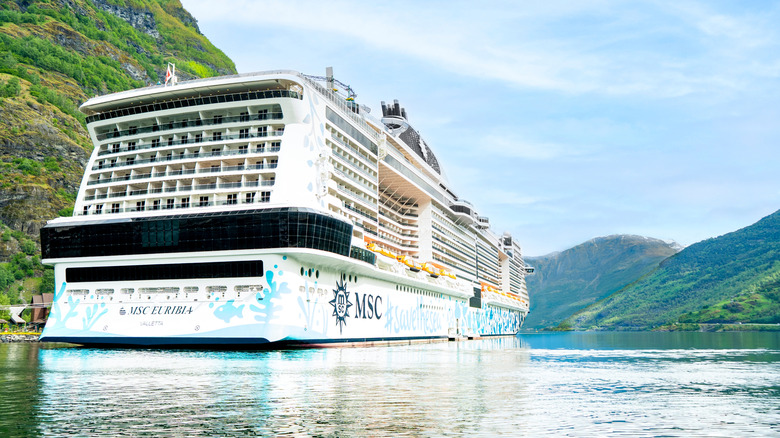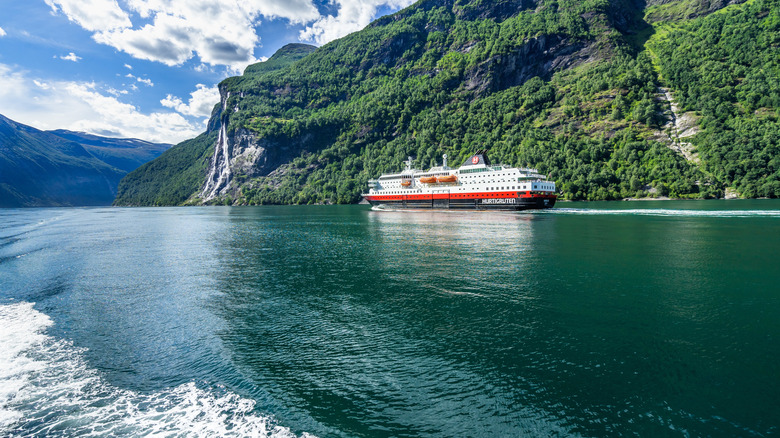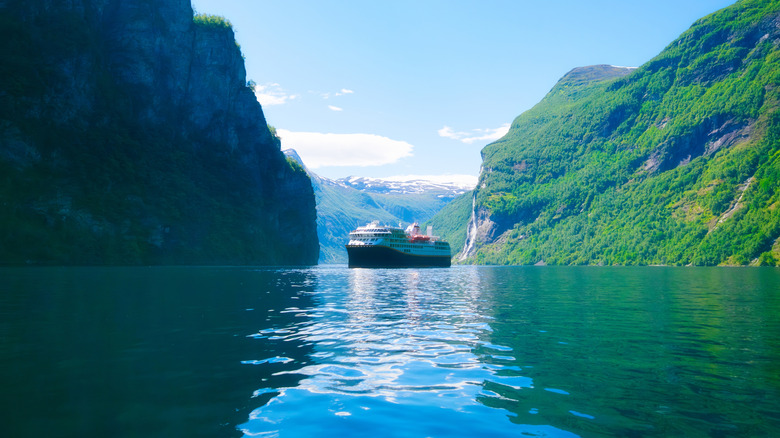To protect the pristine natural beauty of its famous fjords, Norway has laid down new zero-emissions rules for ships operating in the narrow waterways. In 2026, ships in Geirangerfjord and Nærøyfjord, which are real names and not your ten-year-old cheating at Scrabble, must not emit any CO2 or methane at all. This applies to ships under 10,000 gross tonnage; larger ships, like the ubiquitous cruise ships in the area, have until 2032 to comply with the rule.
That’s great news for the fjords, which together are a UNESCO World Heritage site. Pollution from ships (usually diesel fumes) is obviously always bad, but it’s particularly bad in these canyons, where the exhaust gets trapped by the steep mountain walls and can’t dissipate properly, as USA Today notes. Concentrated smog like this is harmful to, well, everything, and the local plants and animals are suffering.
The question, of course, is how exactly shipping companies can comply with the rule. Cruise ships in particular take a long time to build and require a massive amount of power for both propulsion and on-board systems. Most of them run off of diesel-electric generators, in which massive diesel engines create electricity (rather than directly turn the propellers themselves). Those won’t be legal under the new regulations; they emit more than double an airline’s CO2 per passenger. Alternative technologies are starting to appear, but whether the industry can adapt in time remains to be seen.
How to turn the sea green
Some big shipping companies are already experimenting with what low- or even zero-emission vessels could look like. Hurtigruten has already floated a cruise ship with a 60MWh battery pack, with plans to formally launch it by 2030, per Carbon Credits. But more than just being electric, it’s also wind-powered, and by wind-powered, I mean good old-fashioned sails. Except they are very new-fashioned sails, because they are actually solar panels as well. So the sheets both propel with the wind and charge with the sun, simultaneously. We live in the future, and also the past.
Even so, the ship will still need to dock every 350 nautical miles to plug in for a full recharge, which is pretty limiting for range. In order to do that, the ship has to tap into the industry’s newest buzzword; shore power. This is just a fancy way of saying that the ship can plug into the main electrical grid, like any other electric device. That doesn’t sound too fancy, but amazingly, less than 3% of all ports in the world currently feature this capability. Right now, there’s a big push to get a lot more ports to offer shore power, which would also let more polluting ships at least run on-board systems off electricity while docked. This seems like one of those things that should have been done a long time ago, but, here we are.
Meanwhile, biofuels, created from decaying organic matter rather than petroleum, are a potential drop-in technology that can just be pumped into old ships and operated as normal while producing far less CO2. MSC cruises successfully sailed a four-day cruise in 2024 that ran entirely off of bio-liquefied natural gas. On the container ship side, Maersk is looking at using bio-methanol. Other options include hydrogen, with Viking taking delivery of its first hydrogen ship in 2026, and hybrid fuel-electric ships.
Making the switch to save the planet
The challenge right now is the investment it will take to upgrade infrastructure to the point where all of this is widely available. Biofuels still can’t be produced in large enough quantities to power the whole industry; shore power is going to take a while to build out. Predictably, cruise lines are already complaining that they may not be able to hit Norway’s 2032 target.
But Norway already has done a lot of that infrastructure work. Shore power is plentiful there, and the nation’s electrical grid is largely hydropower. Fjords don’t exactly cover vast distances, so having to make frequent recharging stops isn’t necessarily an issue. Something like Hurtigruten’s battery-powered, solar-panel-sailing ship should thrive there. Like the Norse longships once upon a time, maybe Norway will show the world a new way to cross the seas.




